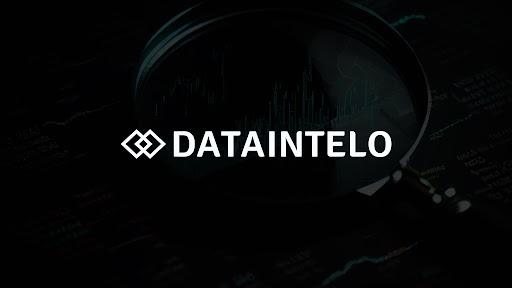The SLG Game Market—short for Simulation and Life Game Market—is expanding rapidly, driven by increasing smartphone penetration, growing eSports engagement, and a rising demand for strategic, immersive gaming experiences. As consumers seek deeper storytelling and control in virtual environments, SLG games are emerging as a preferred genre for millions worldwide.
Defined by real-time decision-making and resource management mechanics, SLG games span historical warfare, civilization building, business simulation, and more.
Key Drivers Fueling the SLG Game Market
Several powerful trends are steering growth in the SLG game segment:
-
Mobile Gaming Explosion: The accessibility of SLG titles on smartphones is increasing market participation across age groups and geographies.
-
eSports and Streaming: Streaming platforms are boosting visibility for niche strategy games, driving community engagement.
-
AI and Real-Time Mechanics: Advanced game engines and AI integration are enhancing the complexity and realism of gameplay.
These dynamics are unlocking significant revenue opportunities for developers and publishers alike.
Limitations Facing the SLG Gaming Industry
Despite its rapid growth, the SLG Game Market faces several structural and commercial restraints:
-
High Development Costs: Creating detailed, strategic environments requires sophisticated game engines and larger development budgets.
-
User Retention Challenges: SLG games often have steep learning curves, posing retention challenges among casual players.
-
Device Compatibility Issues: Graphically intense titles may not perform well on lower-end mobile devices, limiting market access.
Developers are addressing these hurdles through adaptive difficulty levels, lighter builds, and targeted user engagement.
🎮 Request a Sample Report: https://dataintelo.com/request-sample/492501
Opportunities Unlocking New Growth Avenues
As the industry evolves, fresh avenues for innovation and expansion are becoming increasingly prominent:
-
Metaverse Integration: SLG games are expected to play a pivotal role in virtual economies and metaverse environments.
-
Cross-Platform Gaming: Players are demanding seamless transitions between mobile, PC, and console formats.
-
Gamification in Education and Training: The strategic depth of SLG games is being harnessed in learning and simulation-based training modules.
The future of SLG gaming lies in its adaptability and value beyond pure entertainment.
Market Size and Global Valuation
According to Dataintelo’s research, the SLG Game Market was valued at USD 12.8 billion in 2023 and is projected to reach USD 22.5 billion by 2032, growing at a CAGR of 6.4% during the forecast period.
Regional Highlights:
-
Asia-Pacific: Leads global revenue, driven by mobile-first gaming in China, South Korea, and Southeast Asia.
-
North America: High consumer spending and robust eSports ecosystem support steady growth.
-
Europe: Growing interest in historical and tactical strategy games boosts engagement.
These regional insights reflect how cultural preferences and infrastructure shape user behavior.
📊 View Full Report: https://dataintelo.com/report/global-slg-game-market
Market Segmentation Overview
A detailed segmentation provides deeper insight into the structure and trajectory of the market:
By Platform:
-
Mobile
-
PC
-
Console
By Game Type:
-
Real-Time Strategy (RTS)
-
Turn-Based Strategy (TBS)
-
Life Simulation
-
Business Simulation
By Revenue Model:
-
In-App Purchases (IAP)
-
Subscription-Based
-
One-Time Purchase
Mobile-based RTS games currently dominate market share, although subscription models are growing in popularity due to player demand for ad-free experiences.
Emerging Trends and Innovations
SLG games are undergoing significant transformation, with innovative trends driving long-term success:
-
AI-Powered NPCs: Games are integrating more intelligent non-player characters for realistic gameplay.
-
Community-Driven Development: Developers increasingly use player feedback to guide updates and expansions.
-
Blockchain Gaming: Digital ownership through NFTs and decentralized economies are entering SLG frameworks.
These trends underscore the genre’s ability to evolve and align with cutting-edge tech developments.
🕹️ Check Out the Report: https://dataintelo.com/checkout/492501
Competitive Landscape and Market Dynamics
While the SLG game ecosystem remains fragmented, several dynamics are shaping competition:
-
Indie Game Growth: Independent developers are launching innovative SLG titles that rival AAA quality.
-
Localization Strategies: Game publishers are customizing content for regional tastes to improve adoption.
-
Frequent Updates: Live-service models with regular updates and event-based content drive engagement and monetization.
These strategies reflect how agility and community involvement are becoming key to long-term player retention.
Regulatory and Ethical Considerations
With the growth of in-game economies and digital currencies, regulatory scrutiny is intensifying:
-
Age Verification Laws: Governments are implementing age-based restrictions for simulated content and in-app purchases.
-
Data Privacy Standards: Compliance with GDPR, CCPA, and other privacy laws is now a prerequisite for market entry.
-
Digital Well-being: Game developers are incorporating playtime limits and parental control features to encourage healthy gaming habits.
These measures aim to create a safer, more inclusive gaming environment for all users.
Strategic Outlook for the Next Decade
The SLG Game Market is on the cusp of transformative growth as emerging technologies intersect with evolving gamer expectations. With high replay value, competitive strategy, and increasing cultural relevance, SLG titles are poised to attract both new players and long-term loyalists.
The future of the market lies in immersive storytelling, strategic complexity, and seamless cross-device experiences.
📥 Dive Deeper with Custom Insights: https://dataintelo.com/request-sample/492501

